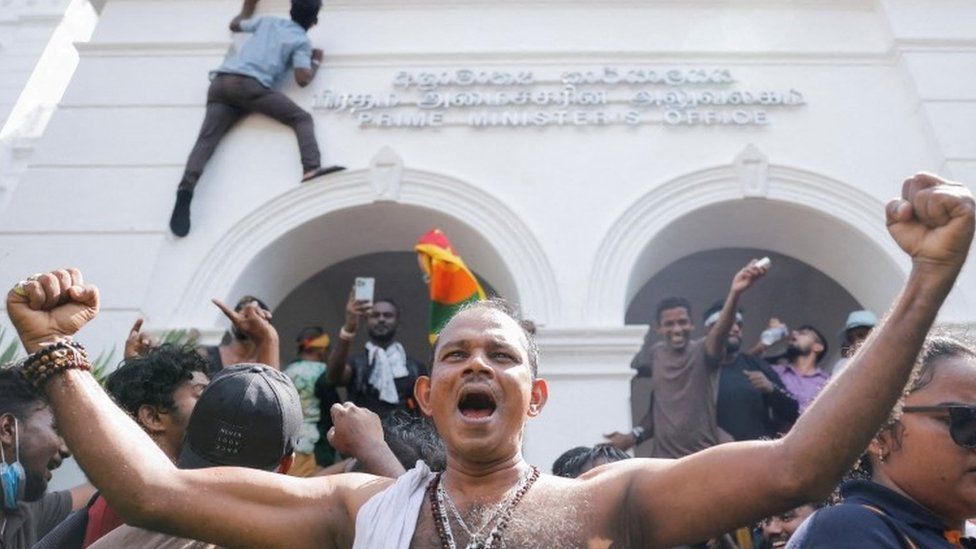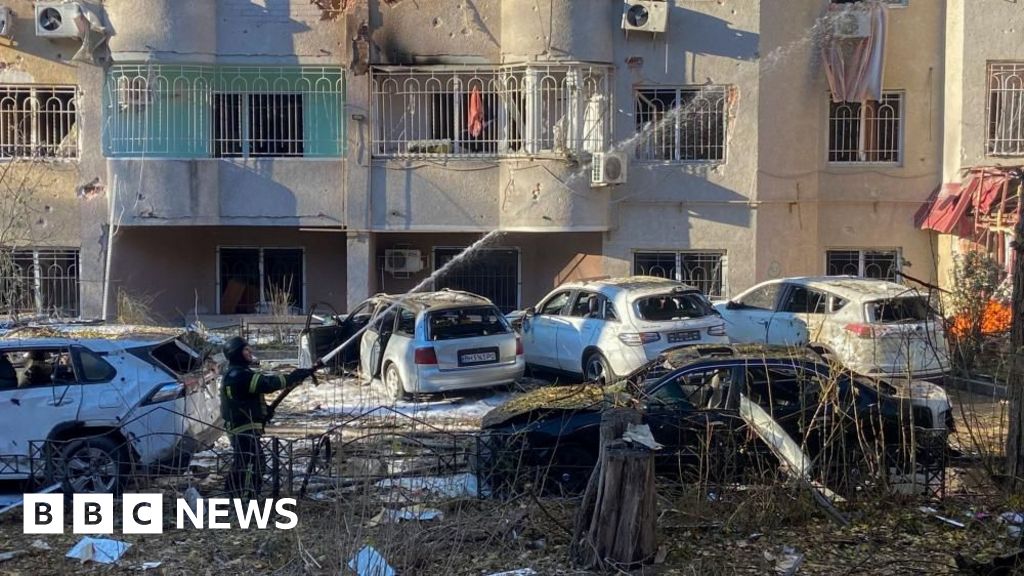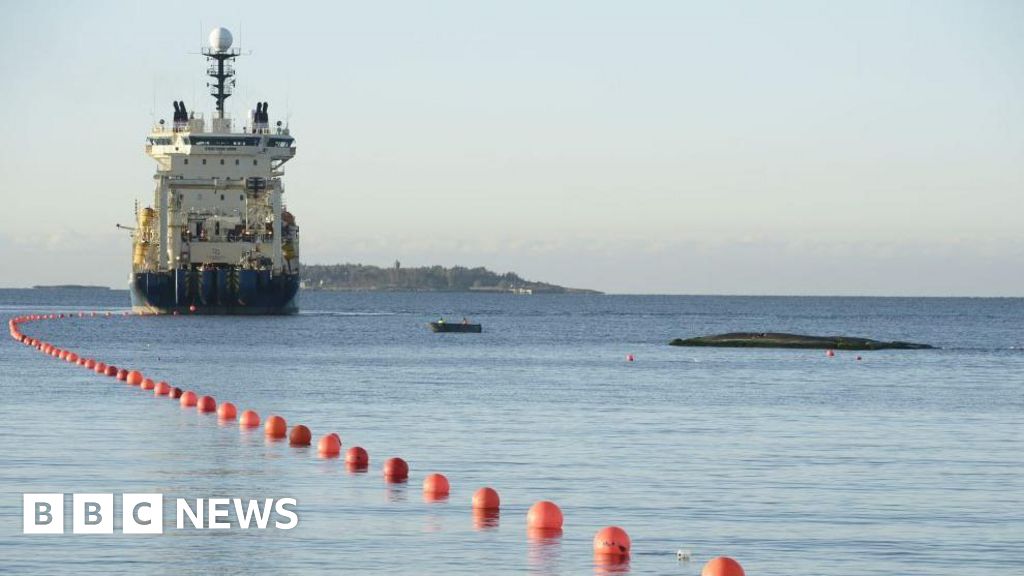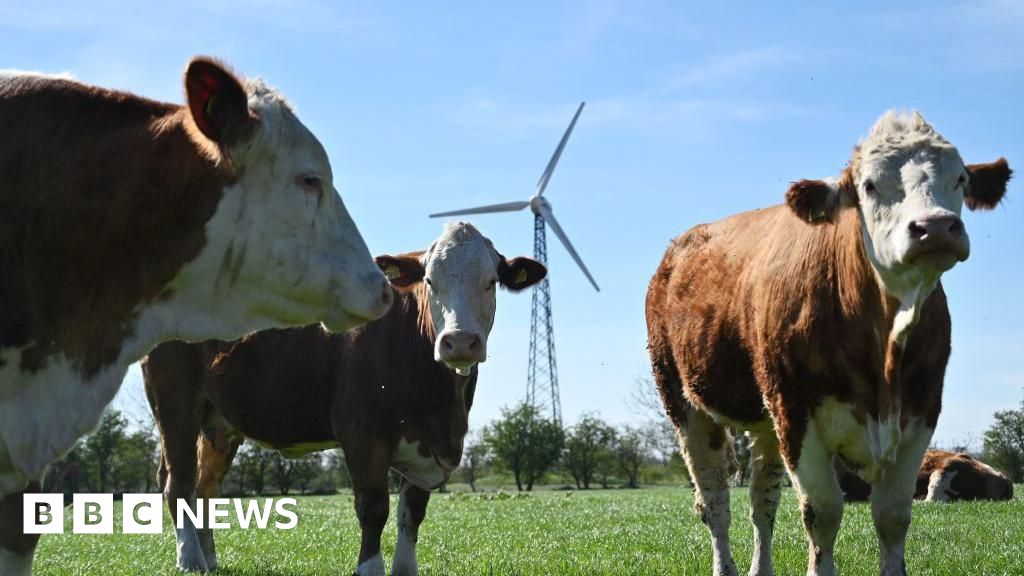ARTICLE AD BOX
By Tessa Wong
Asia Digital Reporter, BBC News, Colombo
 Image source, Reuters
Image source, Reuters
The protesters' anger melted away as they entered the PM's compound
The day started with a hurried departure and the promise of a resignation.
Sri Lankans woke to the news that overnight President Gotabaya Rajapaksa, the man whose family had ruled the island with an iron fist for most of the last two decades, had fled the country having promised to leave his job.
His rule has given rise to mass protests, as people struggle with daily power cuts and shortages of basics like fuel, food and medicines.
At Galle Face Green in the capital Colombo, one of the main centres of the protests, hundreds roamed the streets and listened to fiery speeches from fellow citizens railing against the government and leaders who had steered the country into its worst economic crisis in decades.
Some were happy to see the back of Mr Rajapaksa. But for others like protester GP Nimal, his departure was nothing short of thwarted justice.
"We don't like it. We want to keep him. We want our money back! And we want to put all the Rajapaksas in an open prison where they can do farm work," he said.
As the day wore on, the crowds swelled at Galle Face Green, which took on a festive atmosphere.
Then, the mood changed. Word spread that something was happening at the prime minister's office at Flower Road.
The unrest there came as Prime Minister Ranil Wickremesinghe was appointed acting president by the departing Mr Rajapaksa, and declared a state of emergency and regional curfew in the western region which includes the capital. Mr Wickremesinghe has also faced growing popular anger for his role in the crisis, and protesters are calling for him to resign as well.
Thousands began streaming towards the prime minister's compound. Above their heads, a military helicopter flew low passes, prompting howls of anger and middle fingers from the crowd.
Angry protesters were attempting to break into the grounds of the compound, as rows of poker-faced soldiers and riot police lining the walls looked on. Occasionally a canister of tear gas would be fired at the crowd, but it did little to deter them.
Image source, Reuters
Image caption,Police tried to stop the break-in with tear gas
Protesters climbed up on the black gates to the compound and started rocking them back and forth to tear them off their hinges. The metallic thumps echoed down the avenue to cheers, which only intensified when protesters succeeded in ripping the gates down. They were met by a wall of soldiers.
This appeared to unnerve the military. Suddenly the crowd was pelted with a volley of tear gas canisters shot from inside the compound. The avenue was wreathed in smoke. Protesters screamed in defiance, and began picking up the canisters with their bare hands or traffic cones and hurling them back into the compound.
The next hour saw more volleys of tear gas, each round more intense than the last. Soldiers arrived at one end of the avenue and began shooting their canisters high above the crowd. Arcs of smoke streaked across the blue sky, as the canisters transformed into dangerous projectiles. A man fell to the ground, clutching his shoulder after it was hit by flying debris.
'Keep moving forward'
Each time the choking and sputtering crowd stumbled back through the burning fog of tear gas. But each time they would return, determined.
"Whatever happens, we will keep moving forward," they chanted in Sinhalese.
Another chant referred to the tear gas: "They are splitting us apart, but keep moving forward."
Residents from neighbouring compounds brought out hoses and sprayed protesters down. Trucks drove past with people tossing bottles of water to the crowd. Protesters washed each other's faces, passed water around, and even offered bottles to soldiers standing guard at the walls.
At the gates, protesters still tried to push through. Then - a breakthrough. The wall of soldiers was either overcome or had pulled back.
A path was cleared, and a mighty river of protesters poured in, screaming "Aragalaya" (Struggle), the name of their organic protest movement.
In that instant, their anger melted away, transformed into joy and disbelief.
Image source, Reuters
Image caption,The occupation of the PM's office was a rare victory for the protesters
Screaming and chanting, the jubilant protesters overran the manicured lawn of the prime minister's office, swarming into the stately white building.
Protesters hung out of every window and climbed out onto the second floor balcony. Above the sign "Prime Minister's Office", they held aloft the Sri Lankan flag and lit a flare, chanting "Ranil lunatic, Gota lunatic", delirious with glee.
Inside the building, a set of meeting rooms whose walls bore pictures of various international dignitaries who had visited, including the Queen and Prince Charles, were filled with singing protesters clambering onto desks and chairs. Under the warm glow of a large ornate glass chandelier, they sang: "That's what we said, don't mess with us."
Just outside the doors, a group of armed soldiers watched impassively, as people around them lounged on sofas and snapped selfies.
'Still fighting'
As hundreds of people tried to press in, protesters began setting up their own crowd control measures, holding back people at the doors. Groups were brought in at intervals to gawk at the rooms and take pictures.
On the lawn outside, people lay down on the soft grass and trampled through flowerbeds. Someone brought out drums and banged out a rhythm, as people swirled and danced around them.
"I'm feeling great today," said protester Nixon Chandranathan as he surveyed the crowd. "But we are still fighting, still struggling. Our goal is for Gota to go home. And Ranil and other cabinet members to go home. We need truthful and honest leaders to build up Sri Lanka now."
But after months of hopelessness, food and fuel shortages, and excruciating economic pain, the taking of the prime minister's office was a rare victory they could truly savour.
The people had won, if at least just for a little while. But it's a moment of danger too for Sri Lanka, and no one knows what will happen next.
Sri Lanka: The basics
- Sri Lanka is an island nation off southern India: It won independence from British rule in 1948. Three ethnic groups - Sinhalese, Tamil and Muslim - make up 99% of the country's 22 million population.
- One family of brothers has dominated for years: Mahinda Rajapaksa became a hero among the majority Sinhalese in 2009 when his government defeated Tamil separatist rebels after years of bitter and bloody civil war. His brother Gotabaya, who was defence secretary at the time, is the current president but says he is standing down.
- Presidential powers: The president is the head of state, government and the military in Sri Lanka but does share a lot of executive responsibilities with the prime minister, who heads up the ruling party in parliament.
- Now an economic crisis has led to fury on the streets: Soaring inflation has meant some foods, medication and fuel are in short supply, there are rolling blackouts and ordinary people have taken to the streets in anger with many blaming the Rajapaksa family and their government for the situation.

 2 years ago
20
2 years ago
20








 English (US)
English (US)